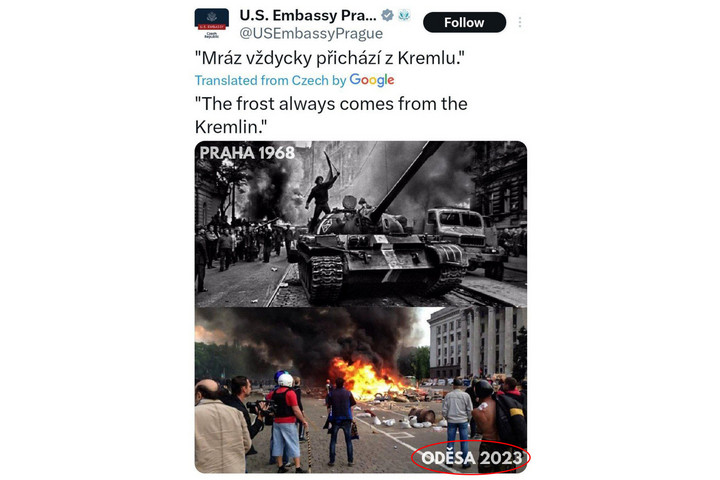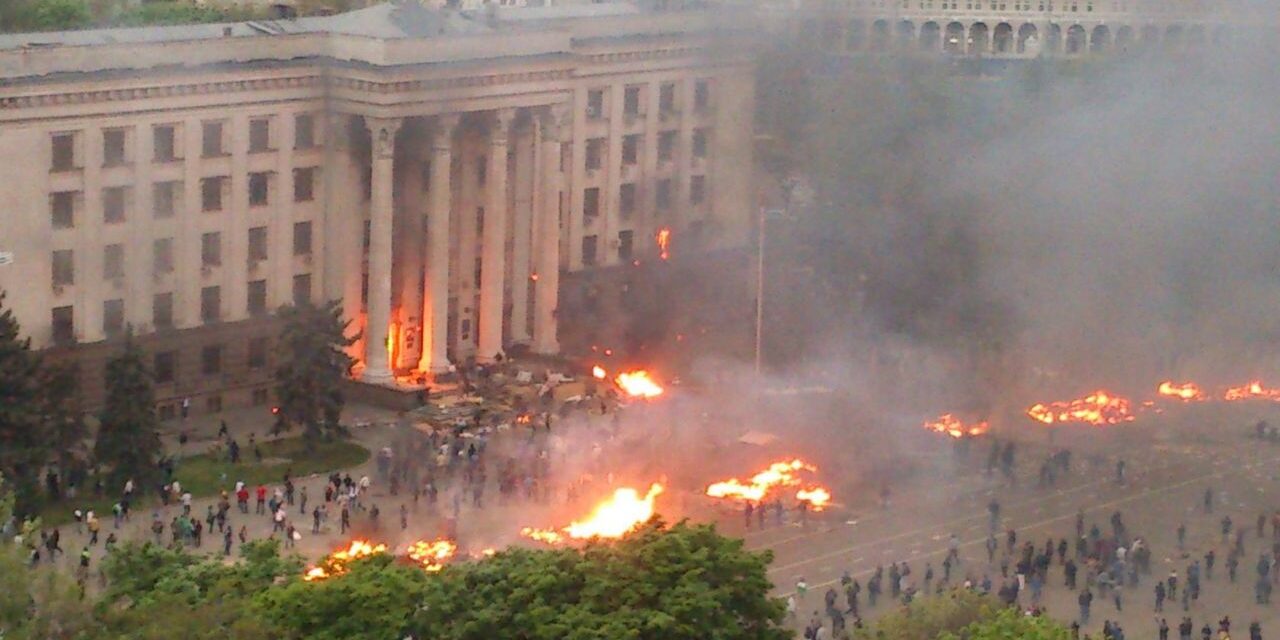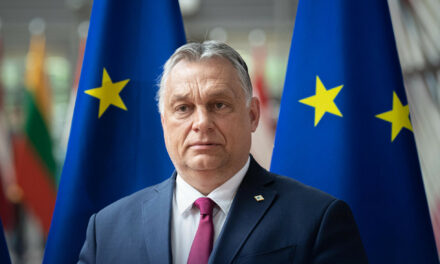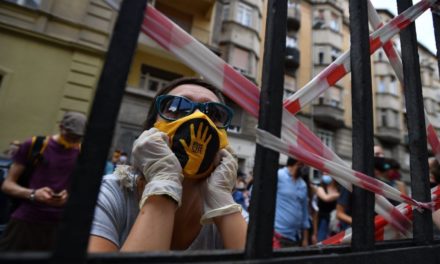Of course, the intention was quite different.
On the anniversary of the suppression of the Prague Spring of '68, the US Embassy in the Czech Republic posted two pictures on X (formerly Twitter). One shows the capital during the entry of the Warsaw Pact troops, the other shows the Ukrainian port city of Odessa, only contrary to the caption, not in 2023, but nine years earlier, and the recording does not show the Russian attack, but the Ukrainian pogrom against the Russian-speaking population perpetuates it.
Someone at the US embassy in Prague recently thought it would be a great idea to parallel the intervention of the Warsaw Pact troops in 1968 with the Russian-Ukrainian war. Why Odessa was chosen to illustrate the current events is a mystery. There are no Russian troops in the port city.

Source: Twitter
The date of 2023 in the Odessa photo is also problematic, since the dates of 2014 and 2022 would have been more correct from the point of view of the historical analogy. The real problem, however, is that, and apparently that's why the post was later deleted
the photograph shows the siege of the House of Trade Unions.
Nine years ago, on May 2, around 2,000 Ukrainians held a pro-Majdan march in the bustling city with a mixed population. In addition to ordinary citizens, members of extremist organizations and football hooligans from Kharkiv also took part in the bankruptcy. The march was disrupted by a Russian-speaking group of several hundred people. Demonstrators and counter-demonstrators spoke together and then threw each other. According to reports, a few shots were soon fired, but to this day it is not known who pulled the gun first.
The Ukrainians eventually chased the Russians away, some of whom barricaded themselves in the House of Trade Unions, which they set on fire. This can be seen in the recording posted by the US embassy. However, the violence did not end there: the fleeing people, often jumping from the second or third floors, were lynched in the square. By the end of the day, 42 people, 34 men, 7 women and one child, had died.
The police watched the pogrom passively, and only one person was later convicted of murder. By the way, the Russian-speaking population took to the streets for their nationality rights, and they demanded the federal reorganization of Ukraine. The post of the diplomats in Prague works to this extent: one picture shows Russians fighting for their rights, and the other shows Russians from Odessa fighting for the same. But that obviously doesn't fit into Washington's narrative.
Featured image: oroszshirek.hu













